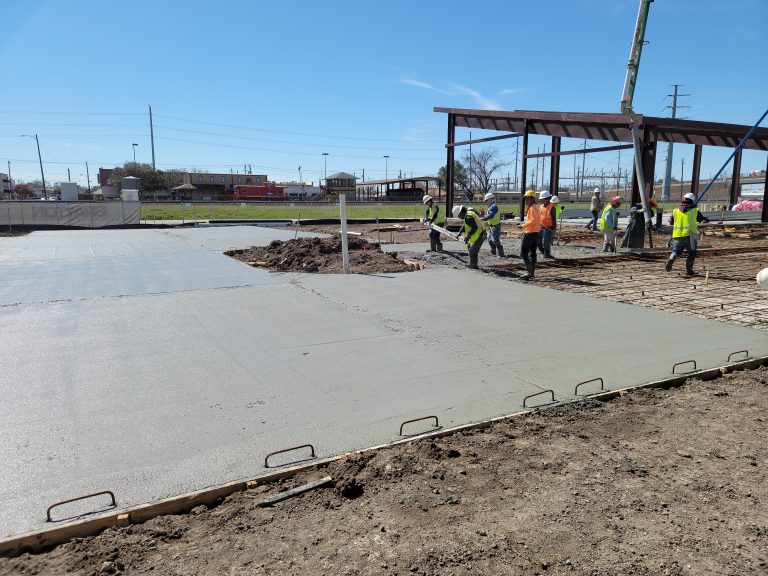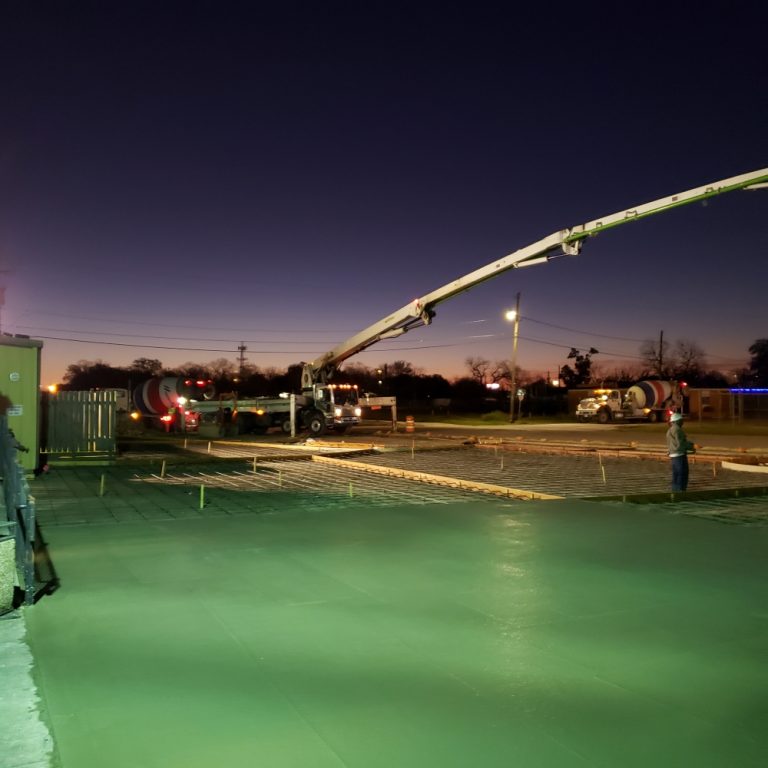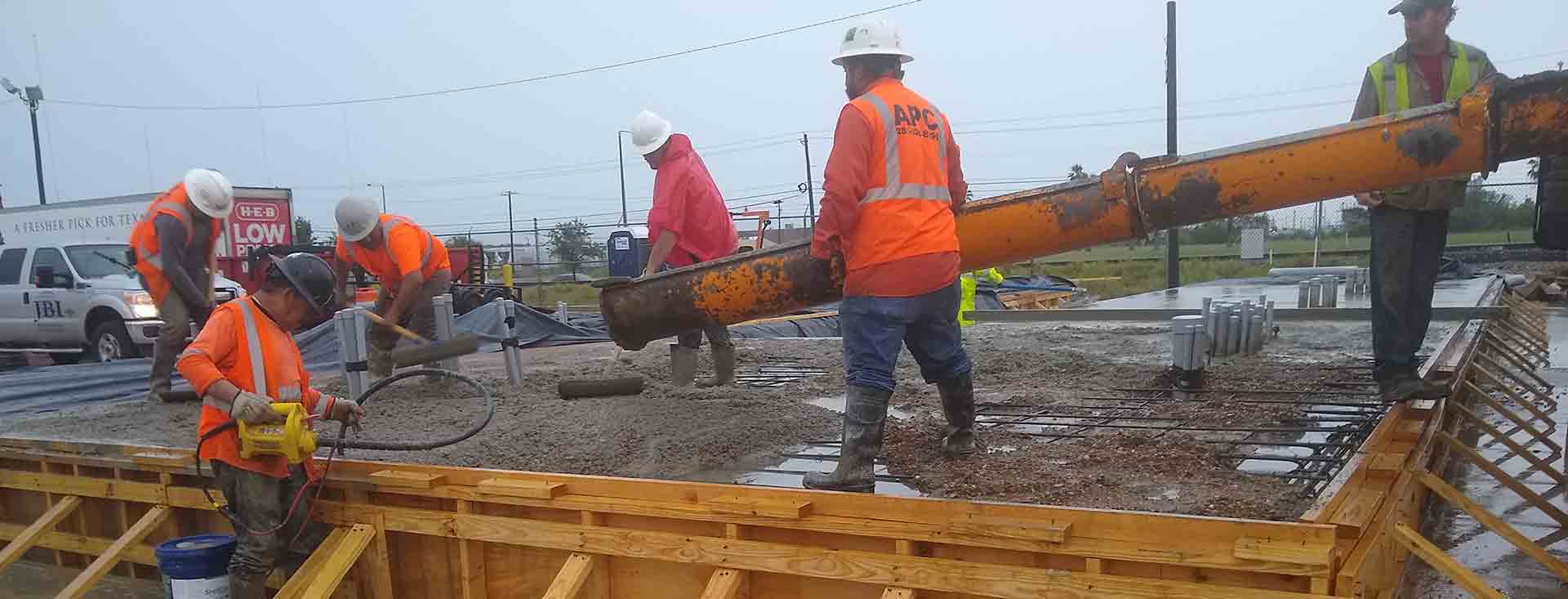Concrete Slab Replacement in Houston
Concrete Slab Replacement Can Restore Full-Depth Integrity
A concrete slab will last for decades if properly installed, but it will eventually need to be replaced. The process requires significant manpower and equipment, which is why it’s important to work with an experienced team of pavement contractors.
Full-depth slab replacement is most often needed for streets and highways, where the pavement is exposed to challenging loading and weather conditions. Once complete, concrete slab replacement will restore the pavement’s appearance, performance, and long-term integrity.
When is Full Concrete Slab Replacement Required?
In general, if the concrete is compromised past a depth of a couple of inches, slab replacement is more cost effective. The challenge is knowing when the pavement has deteriorated to that point. It’s not always obvious if you don’t know what to look for. As such, here are some signs that deeper pavement deterioration is going on:
- Noticeable wear or damage near joints – Damage near longitudinal or transverse joints is the most common reason for full-depth replacement. This damage could be in the form of extensive cracking or spalling (chipping away). When joint deterioration is present, it’s most often due to compressive stresses, such as those caused by thermal expansion.
Joint damage typically points to deeper problems with the pavement that can’t be resolved through repairs alone. - “Punchouts” or localized slab breaking – Punchouts may occur in steel-reinforced concrete and are frequently caused by problems with the steel, including corrosion or inadequate reinforcement. Poor air removal and curing can also produce punchouts.
In every case, punchouts appear as localized breaking of the slab. Typically, this compromised section will be broken into many smaller chunks and completely separated from the intact slab. - Corner breaking – Corner breaking is caused by excessive loading on the slab’s corner. Corner breaking is more likely when the slab’s corner support is failing – as the loading stresses will not be evenly distributed.
Corner breaking looks like a long crack that intersects with the longitudinal or transverse joint – or both. - Severe transverse or longitudinal cracking – Transverse (perpendicular to the road’s direction) and longitudinal (parallel with the road’s direction) cracking can normally be repaired through less costly means if those repairs are handled early. In fact, some transverse cracks become “working” cracks and function like joints. However, these and longitudinal cracks will need to be filled before they develop spalling or permit water intrusion.
If not addressed early, transverse and longitudinal cracks can become focal areas for further pavement deterioration, such as spalling or faulting. At this point, full-depth slab replacement may be necessary.



What Does the Concrete Slab Replacement Process Look Like?
If your concrete is showing any of the above signs, then full-depth slab replacement is likely required. If it is, here’s what you can expect from the process:
- First, the failed slab is removed – The compromised slab must be extracted from the roadway first so that new pavement can be placed. To do this, the pavement team will make square-shaped cuts around the edges of the failed area. The cuts are marked before they’re made, and cutting is done with sawcutters using diamond-tipped blades.
In hot weather, the slab may be subjected to intense compressive forces, making it difficult for sawcutters to produce clean cuts. To resolve this, a wide relief cut may be required elsewhere in the pavement. This relieves compressive forces in the slab and allows sawcutters to continue their job.
Once the cuts are made, the separated slab is extracted from the ground. There are multiple ways to do this, but one way is to place anchors into the failed slab that an extractor can grab and lift from.
When the failed slab is removed, an inspector checks the intact pavement around the cut to ensure it is in good condition. In some cases, additional cuts and removal are required to isolate the failed pavement from the intact slab. - Next, the underlying base is restored and stabilized – Once the failed slab is removed, the exposed base can be accessed and restored. During this step, the base is fine graded to the pavement depth. If additional base material is needed, it is mixed and added at this time.
Inside each concrete slab are load transfer dowels, responsible for distributing load and stresses between slabs. These dowels are installed during slab replacement, using a drill that opens up small holes in the slab’s transverse face. These holes are cleaned out and a dowel is placed in each one and coated with epoxy (or something similar) to reduce friction between dowel and concrete surfaces.
Once the dowels are installed, concrete forms may be placed if the new concrete is to be poured. - Then, the new concrete is placed – There are a couple of ways to install a new concrete slab. One way is to preform the concrete at a factory to specification and transport it to the project site.
Another way is to pour the new concrete and allow it to cure at the project site. To do this, the base must be wetted to prevent moisture from leeching into the soil. The concrete is then poured evenly around the forms and, using vibration, air is removed from the concrete.
Once poured, the concrete is leveled, inspected again to ensure the proper grade, and is textured with a broom. Finally, a curing agent (if needed) is added to ensure the concrete retains enough moisture for proper curing. - Last, joints are cut into the new slab – As soon as the concrete can handle sawcutting (24 hours or less), joints are cut into the new slab. This includes transverse and longitudinal joints.
Once the joints are cut, they’re sealed with compressible, rubber-like fillers that prevent water intrusion while retaining flexibility during thermal expansion.
Full-Depth Slab Replacement Can Restore Long-Term Stability to Your Pavement
Full-depth slab replacement should only be handled by experienced pavement contractors. While the process isn’t overly complex, tight construction tolerances must be observed throughout. That’s difficult to do without extensive slab replacement experience.
And if your new slab isn’t installed to those tolerances, it won’t be long before the replacement slab requires attention. That’s why property owners prefer to work with contractors like American Paving – contractors that have the expertise, manpower and equipment to execute slab replacement to precision.
